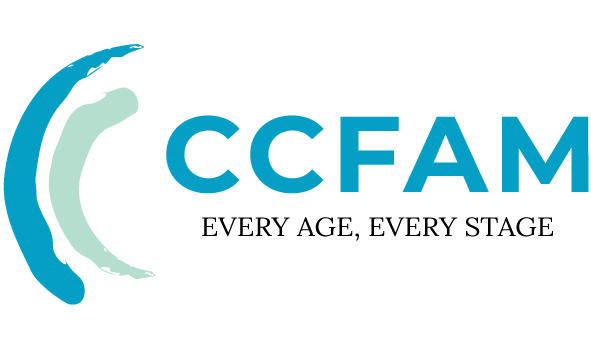19 May The Science Behind Play Therapy for Kids
Developmentally grounded play therapy for children is a neurobiologically informed intervention that uses children’s natural modes of expression. Unlike many adult talk therapies, child-centered play therapy works through symbolic and sensory channels, making it especially effective for addressing preverbal trauma and attachment disruptions. This analysis outlines the polyvagal theory foundations of play therapy, compares common therapeutic approaches, and offers DSM-5–aligned treatment considerations.
What Makes Play Therapy Developmentally Unique?
The Association for Play Therapy (APT) and developmental neuroscience emphasize that play therapy aligns with how young brains process experience. Key developmental features include:
- Right‑brain and limbic engagement: Play activates emotional and relational processing systems before verbal, logical language fully develops.
- Sensorimotor integration: Tactile, movement, and sensory experiences are combined with affect regulation to support embodied processing and learning (see recent pediatric research).
- Nonverbal symbolic processing: Through metaphor and symbolic play, children can express and reorganize implicit memories without relying on explicit verbal recall.
Polyvagal Theory and Play Therapy
Polyvagal theory offers a framework for understanding how autonomic regulation affects social engagement and safety cues in play-based work. By creating a safe, co-regulatory relationship, therapists can help children shift out of defensive autonomic states and access social‑engagement systems that support learning and healing. For a primer on the theory, see resources from the Polyvagal Institute.
4 Evidence-Based Play Therapy Techniques
Several play-based protocols have empirical support in U.S. clinical practice and research. The following descriptions summarize commonly used, validated approaches:
- Theraplay® protocols: Attachment-focused, activity-based interventions that improve parent–child synchrony and increase opportunities for positive affective repair.
- Trauma‑focused sandtray: A nonverbal, symbol-based modality shown to reduce trauma-related symptoms by allowing children to externalize and reorganize difficult material.
- Expressive art sequencing: Structured creative activities (e.g., drawing, movement, bilateral stimulation) that enhance emotional literacy and integration.
- Filial therapy models: Parent‑implemented therapeutic techniques that train caregivers to use play as a corrective, reparative interactional strategy at home.
How Play Therapy Differs From Traditional Child CBT
| Parameter | Play Therapy Counseling | Traditional Child CBT |
|---|---|---|
| Primary neural targets | Limbic system and right‑hemisphere processing | Prefrontal cognitive control and verbal reasoning |
| Communication mode | Symbolic, sensory, metaphoric | Verbal, didactic, skill‑based |
| Typical age range | Preschool to middle childhood (roughly 3–12 years) | Often effective from later childhood through adolescence (10+ years) |
When to Seek Play Therapy: Clinical Indicators
Leading pediatric and trauma organizations recommend play therapy when children present with:
- Complex developmental trauma, especially that which occurred before verbal memory developed
- Selective mutism or anxiety disorders with significant nonverbal symptoms
- Regulatory difficulties that interfere with school or daily functioning
- Attachment challenges related to adoption, foster care, or disrupted caregiving that require dyadic repair
3 Emerging Innovations in U.S. Practice
- NeuroPlay Therapy™: Integrates EEG biofeedback with play-based interventions to monitor and support regulation (examples of hospital‑based programs exist).
- Culturally responsive play tools: Multicultural dollhouses and materials designed to enhance cultural humility and representation in trauma work.
- Tele‑play protocols: HIPAA‑compliant virtual play therapy approaches that broaden access for rural and underserved families when in‑person services are limited.
Selecting Qualified Play Therapy Providers
When choosing a clinician, parents and referrers should verify relevant credentials and training. Helpful qualifications include:
- Registered Play Therapist (RPT) or RPT‑Supervisor (RPT‑S) certifications through APT
- Specialized training in DIR/Floortime, EMDR‑informed play approaches, or trauma‑focused play modalities
- Experience using early childhood diagnostic frameworks such as DC:0‑5™ when applicable
Clinical Efficacy and Outcome Considerations
Contemporary play therapy models are trauma‑informed and developmentally sequenced, aiming to engage children’s natural healing capacities through relationship and embodied experience. Outcome studies report meaningful improvements for anxiety and trauma symptoms in many pediatric samples; however, effectiveness varies by model, implementation fidelity, and individual factors.
FAQs: Evidence‑Based Play Therapy
1. What insurance codes commonly cover play therapy counseling?
Some U.S. insurers accept psychotherapy CPT codes (for example, 90837 for longer individual psychotherapy sessions) when services are provided by licensed clinicians who hold appropriate play therapy credentials. Reimbursement depends on the insurer, provider credentials, documented medical necessity, and state regulations.
2. How does child play therapy address trauma differently?
Play therapy facilitates processing of implicit and sensorimotor memories through symbolic, nonverbal experience rather than relying solely on explicit recall. This can reduce the risk of retraumatization while supporting regulatory and relational repair.
3. Can play therapy be adapted for neurodiverse children?
Yes. Models such as DIR/Floortime and sensory‑informed play strategies are commonly adapted for children on the autism spectrum and those with sensory processing differences, with attention to individualized sensory needs and communication styles.
U.S. Clinical Resources
- Association for Play Therapy: Evidence‑Based Practice Guidelines
- American Academy of Pediatrics
- National Child Traumatic Stress Network: Play Therapy Research
- Polyvagal Institute: Resources on Autonomic Regulation
- American Psychiatric Association: DSM‑5 Resources
Conclusion: The Neurodevelopmental Value of Play
Play therapy is a developmentally aligned, trauma‑informed approach that leverages relational safety, sensory engagement, and symbolic expression to support emotional healing and regulation. When delivered by trained clinicians and integrated with family systems and developmental assessment, play‑based interventions provide empirically supported pathways to improved functioning for many children.



Sorry, the comment form is closed at this time.